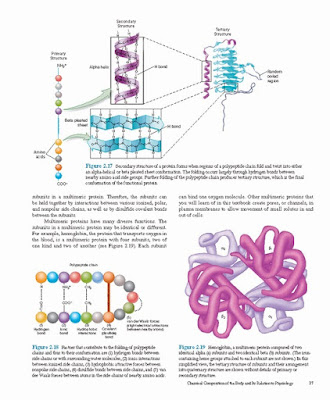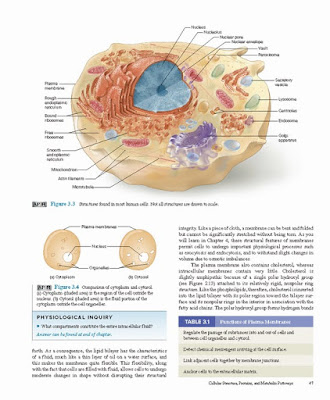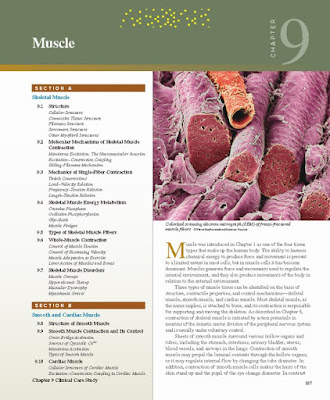by Eric Widmaier (Author), Hershel Raff (Author), Kevin Strang (Author)
The 15th edition of Vander’s Human Physiology has been updated throughout to reflect the latest advances in our knowledge of physiological processes, including their cellular and molecular mechanisms. Each chapter has been carefully read for opportunities to improve clarity or flow, or to enhance artwork by editing existing art, improving the detail and sophistication of anatomical illustrations, or adding new art. As in previous editions, we have paid particular attention to the many different assessment tools that have been introduced into the text over several editions. In some cases, for example, new Physiological Inquiries have been added to key figures, and others have been modified to reflect feedback from users of the book. The previous edition included an overhaul of the digital content associated with the book. In this edition we have gone a step further with the addition of a new author who is fully vested in maintaining, updating, and introducing innovation to Connect, Learn Smart, and our other products in the digital realm. A brief overview of some key changes to chapters follows.
Chapter 1 A new figure has been added that demonstrates positive feedback, using blood clotting as a model. The section on adaptation and acclimatization has been expanded with examples.
Chapter 4 The concept of membrane potential is now expanded upon and treated in a new section called “Ion Movement and Membrane Potential.”
Chapter 5 Several Physiological Inquiries have been reworded for clarity and linked to relevant hints from prior readings in Chapter 3. Signaling and ligand/protein interactions are now better integrated with cross references throughout to key figures in Chapter 3. The treatment of specificity of signaling and receptor binding has been reworked for improved clarity. The mechanisms of cessation of cell signaling are more clearly explained with examples.
Chapter 6 Two new challenging and quantitative Physiological Inquiries have been added to two figures. A new section has been added on “lipid neurotransmitters” including a discussion of endocannabinoids.
Chapter 7 A new figure of cochlear hair cells has been added. A new figure illustrating tonotopic mapping of sound along the basilar membrane has been added. The depiction of the semicircular canals has been rendered for better 3D accuracy. A new Physiological Inquiry regarding the mechanisms by which NSAIDS block pain signals has been included. In the text, newly discovered itch receptors are discussed; the relationship between time indoors and the incidence of myopia is covered; and a new discussion about taste receptors found in the GI tract and respiratory epithelia and believed to be important in numerous reflexes such as coughing and sneezing has been added.
Chapter 8 Table 8.3 has been revised and updated. New ideas regarding the necessity for sleep have been incorporated. Statistics on ADHD have been updated, and the currently accepted term “Substance use disorder” has now been introduced and replaces “dependence.”
Chapter 9 Two new Physiological Inquiries, including one on a new term added to the text (calsequestrin), have been added to two figures. The presence of the protein nebulin in thin filaments is now mentioned. Muscle fiber types have been renamed to reflect current designations in human muscle (Types 1, 2A, and 2X). New research is cited regarding the mechanism by which spicy foods reduce muscle cramps.
The description of depolarization block has been improved and updated.
Chapter 10 Discussion of golgi tendon organs has been updated and expanded. A description of the diseases amyotrophic lateral sclerosis and large fiber sensory neuropathy has been added.
Chapter 11 A new, full-page figure has been added to the beginning of the chapter, illustrating the location of major endocrine glands and other endocrine structures in humans. The hormones produced by these structures are named and a few key functions of each are given.
Chapter 12 Several figures have been redrawn to more accurately represent the functional anatomy of the heart and the effect of vasodilation on arteriolar and capillary pressures. The function of venules and veins in circulatory control has been updated. The tables describing the drugs to treat chronic hypertension and chronic heart failure have been updated.
Chapter 13 The chapter has been reorganized to better describe lung mechanics and alveolar ventilation. A new figure has been added to explain the effects of anemia and carbon monoxide poisoning on the transport of oxygen in the blood. Information has been added about the effects of shunt and of opiate overdose on the development of hypoxia.
Chapter 14 A new figure has been added to better show the functional anatomy of the bladder during micturition. A new figure has been added that explains the mechanisms of sodium and chloride reabsorption in the ascending limb of the loop of Henle via the Na-K-2C1 (NKCC) cotransporter.
Chapter 15 The chapter has been thoroughly reorganized such that following an overview of the digestive system, all of the functions of each segment along the alimentary canal are described in order. In addition, two new figures have been added, one on the hepatic portal system and another early in the chapter describing the ingested forms of macromolecules and the enzymes involved in their digestion.
Chapter 16 The regulation of body temperature is now treated in its own new section, with a new subsection called General
Principles of Thermoregulation. Lipoproteins are now described in detailed and distinguished from each other with additional text and a new figure showing their structures. A discussion of exercise-associated thermogenesis (EAT) and
nonexercise activity thermogenesis (NEAT) has now been added to the section on energy balance. The terms hunger, appetite, and satiety are now defined and distinguished. Finally, the limitations of using BMI as an indicator of obesity and adiposity have been better elucidated.
Chapter 17 The chapter has been reorganized with a new section on pregnancy, contraception, infertility, and hormonal changes through life. New information has been added about epigenetic programming and ovarydetermining genes. A new section and table has been added to compare and contrast male and female hormonal changes through life. The section on contraception and infertility has been updated.
Chapter 19 This chapter has been updated with treatment of thyrotoxicosis and the use of glucocorticoid therapy in septic shock.
Product details
- Publisher : McGraw-Hill Education; 15th edition (January 8, 2018)
- Language : English
- Hardcover : 800 pages
- ISBN-10 : 1259903885
- ISBN-13 : 978-1259903885
- Item Weight : 4.29 pounds
- Dimensions : 9.2 x 1.2 x 11.1 inches








No comments:
Post a Comment